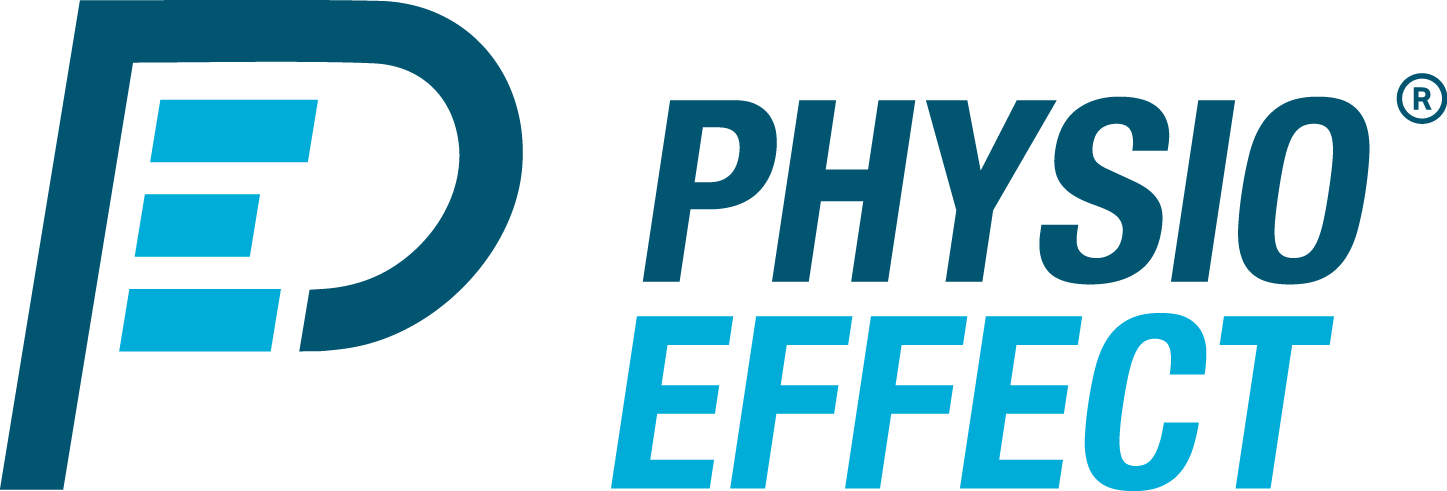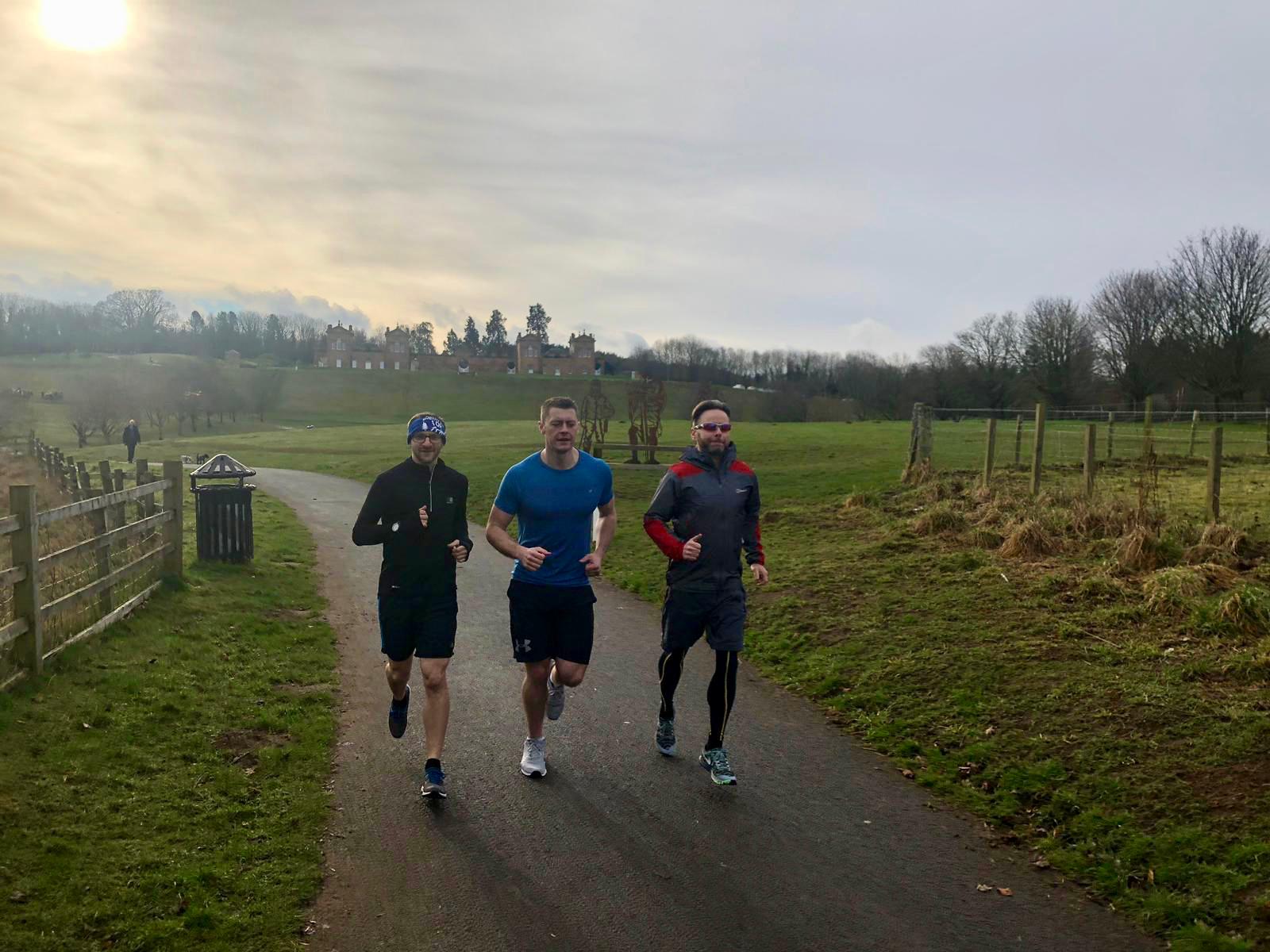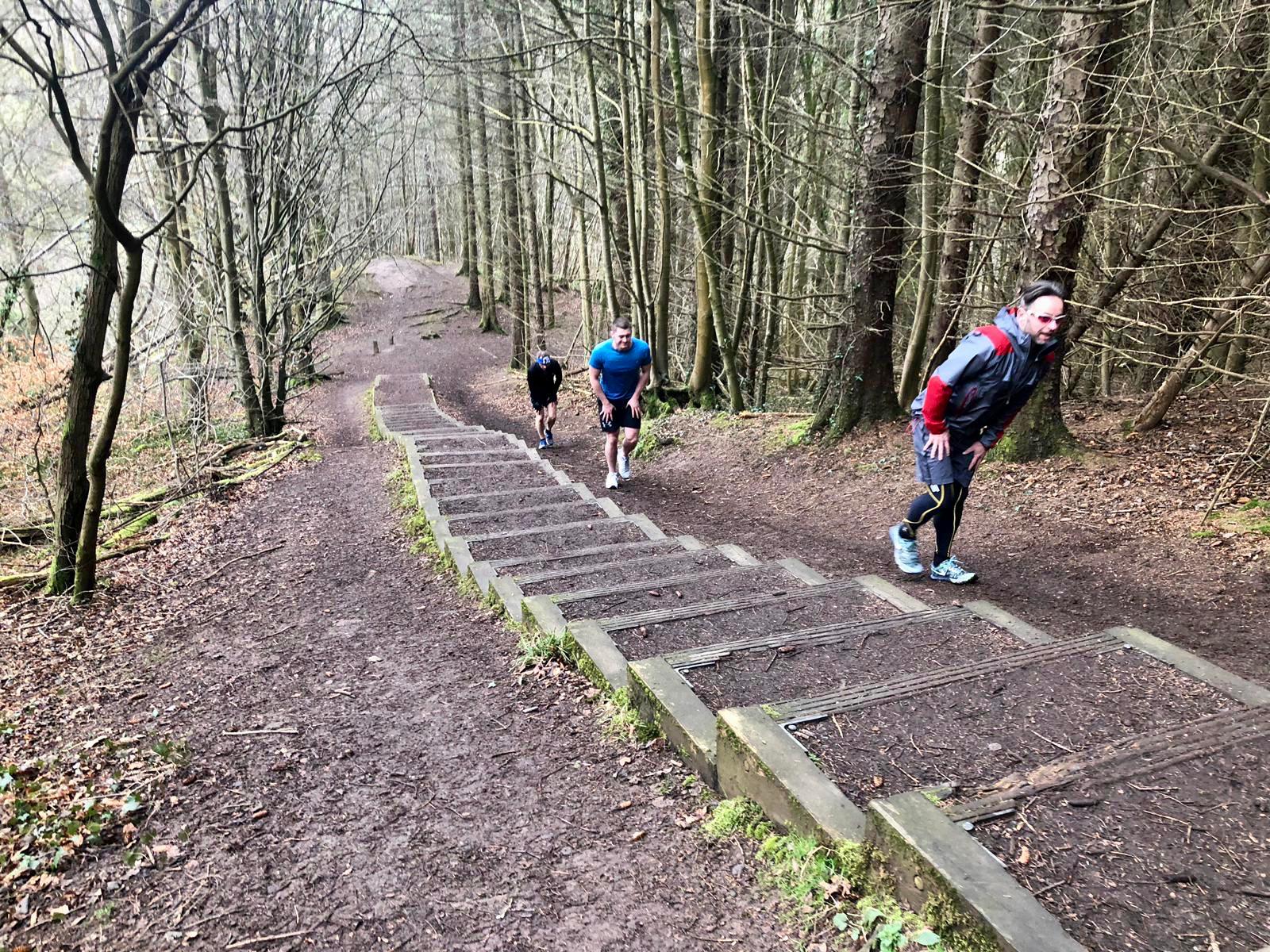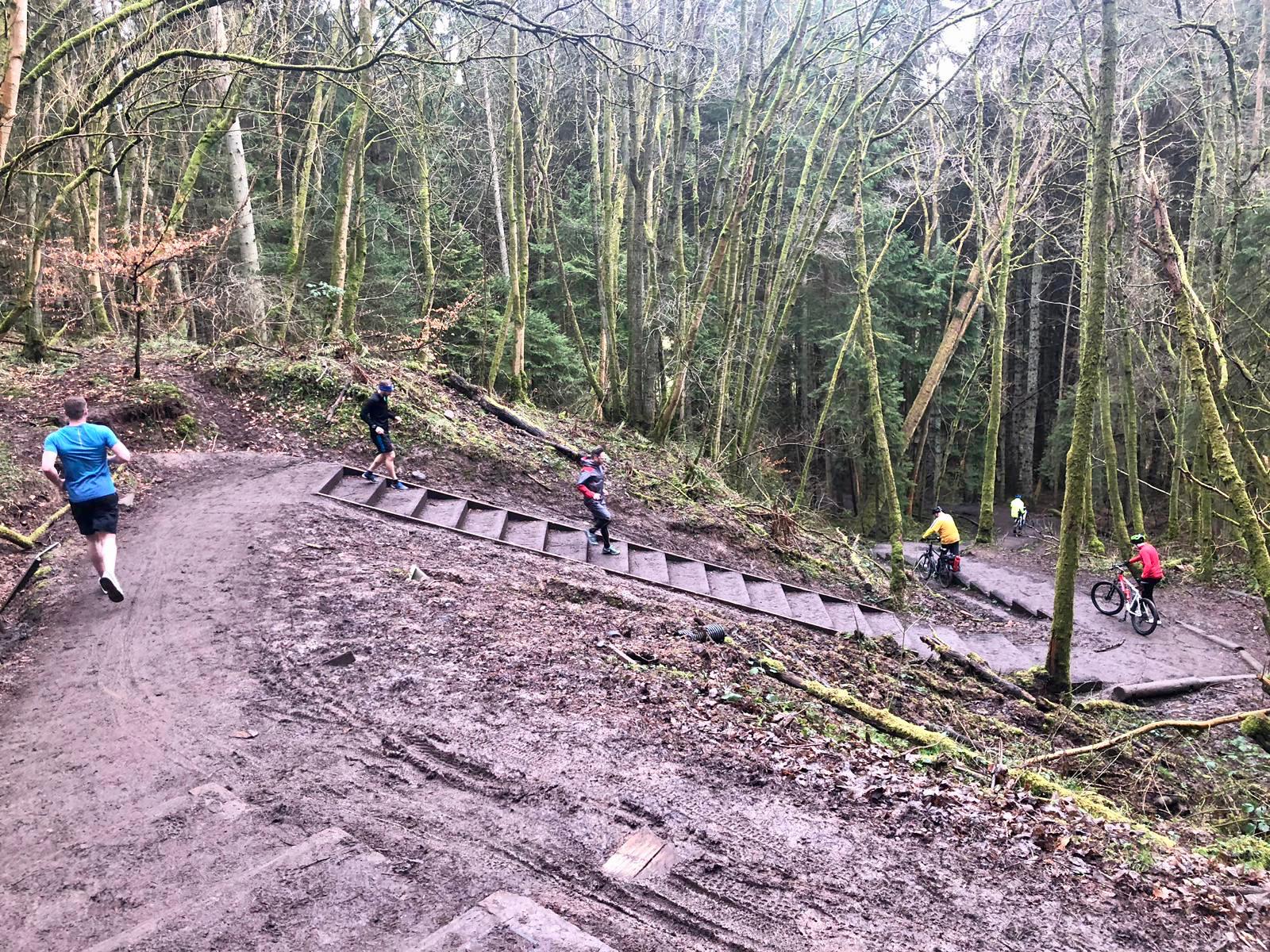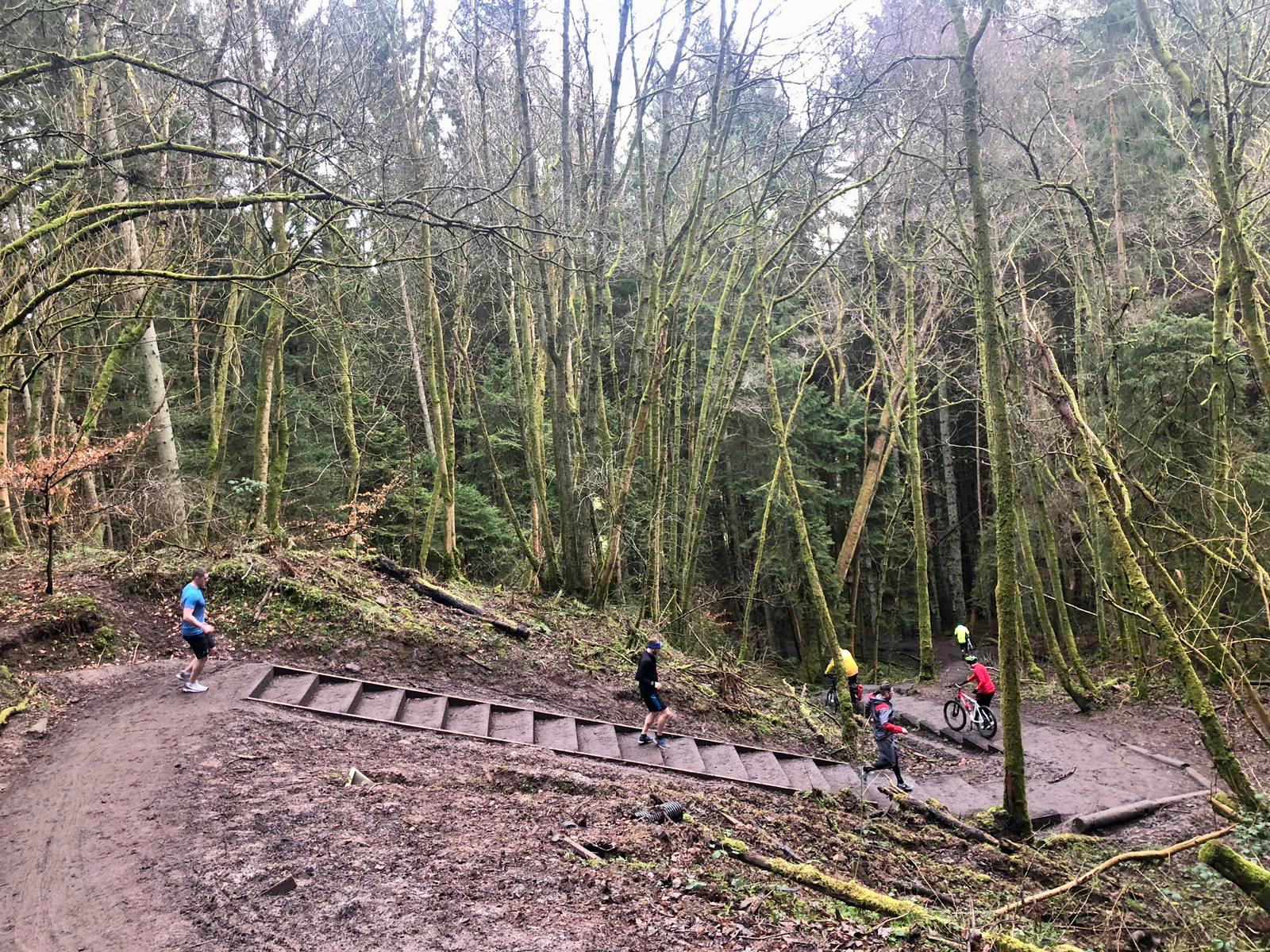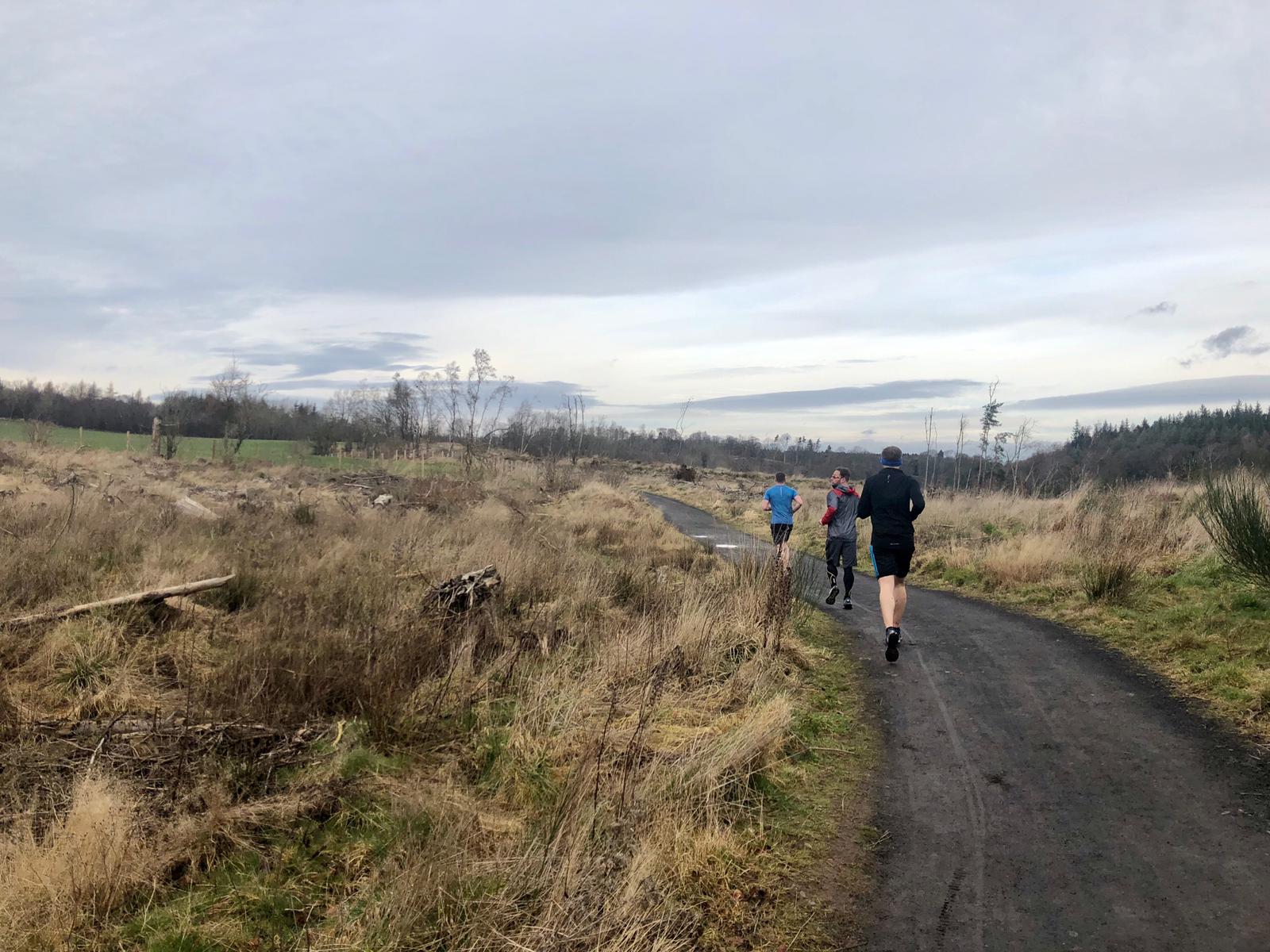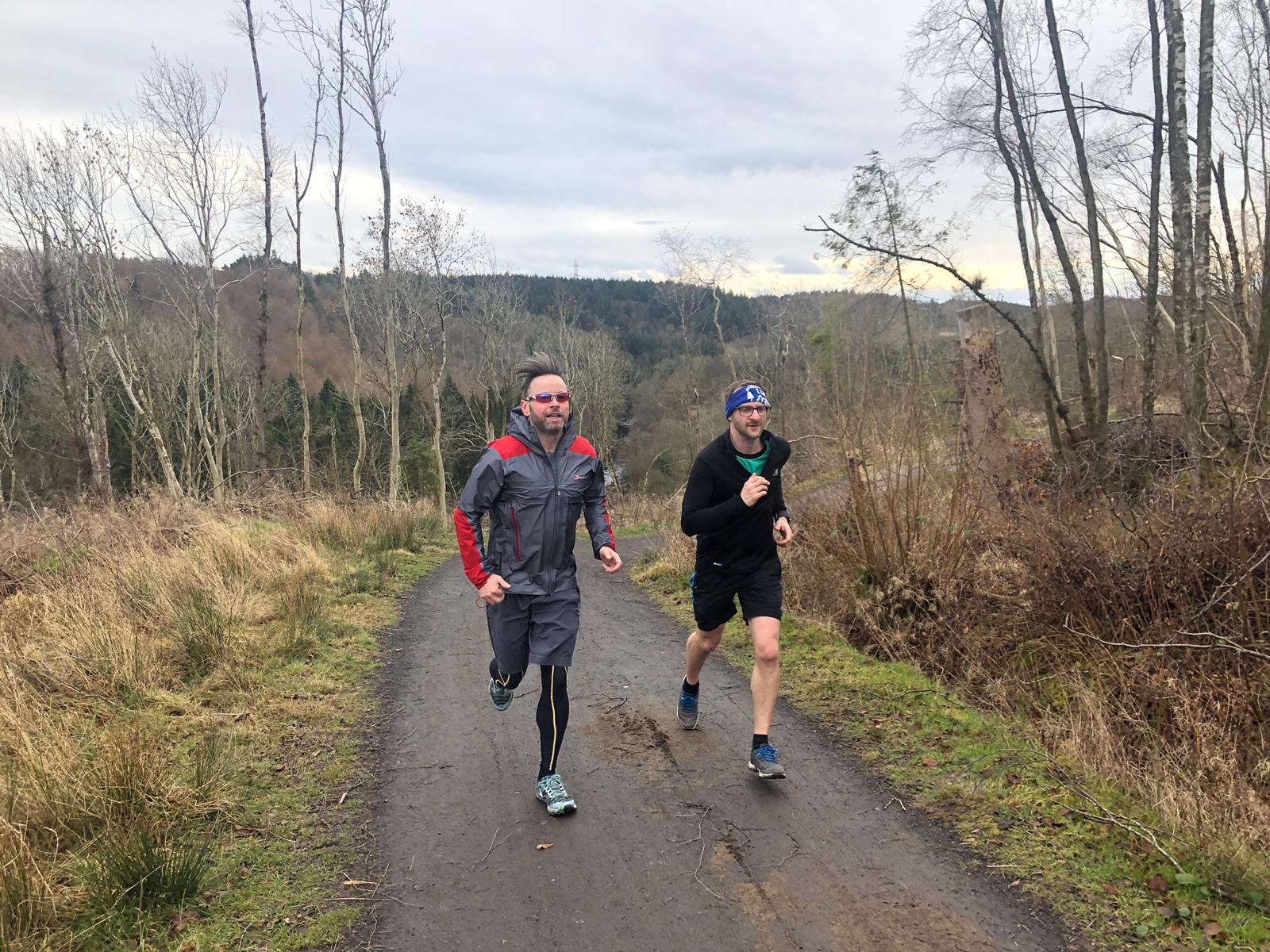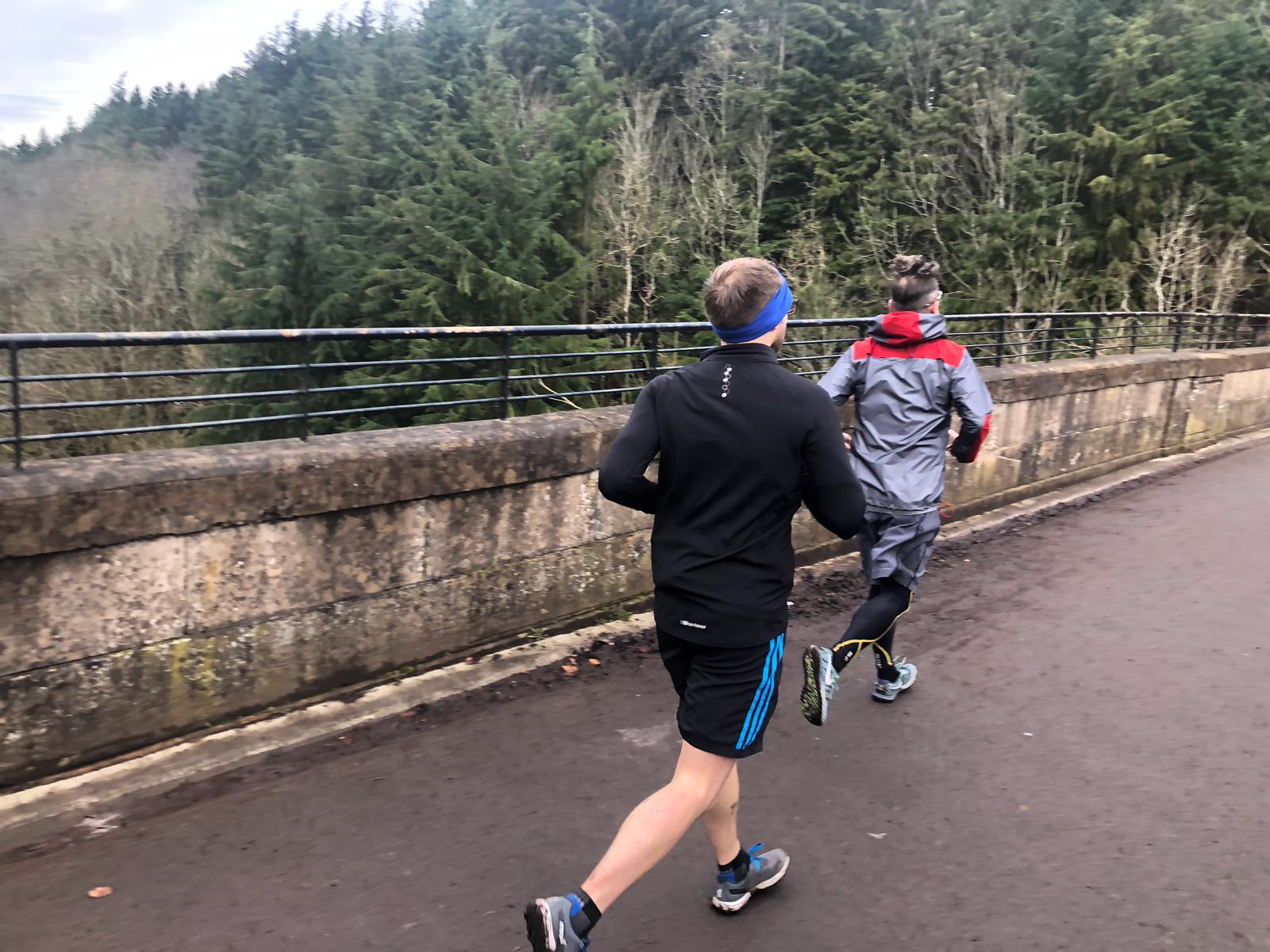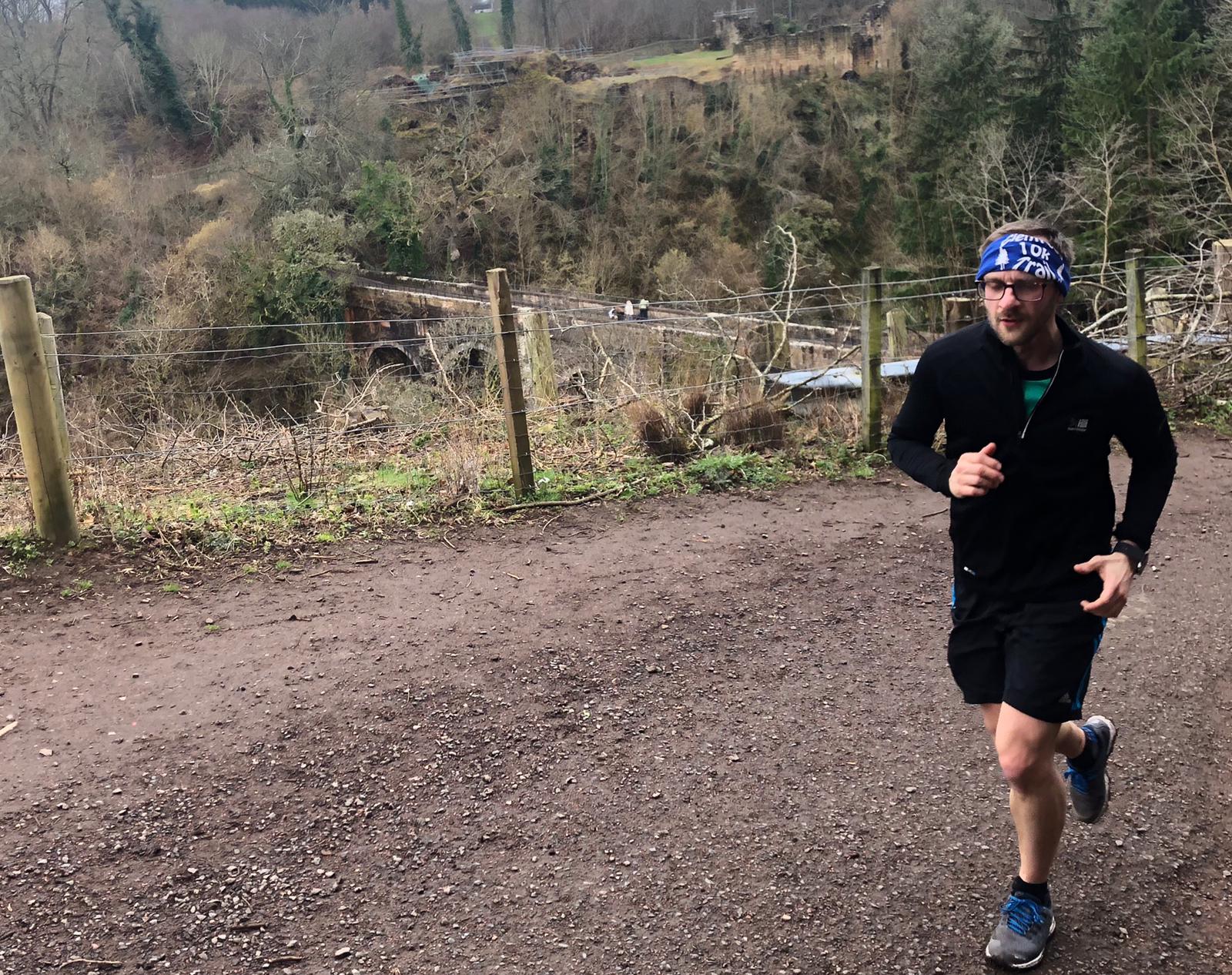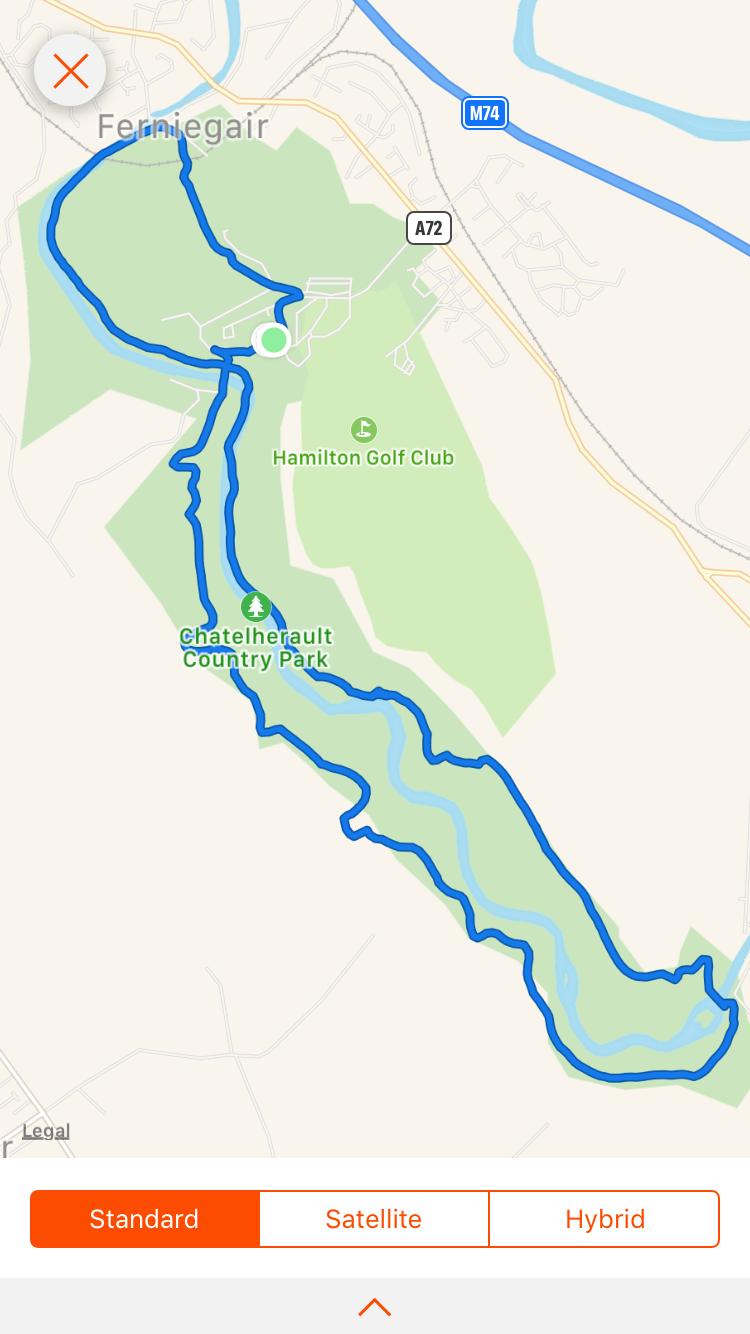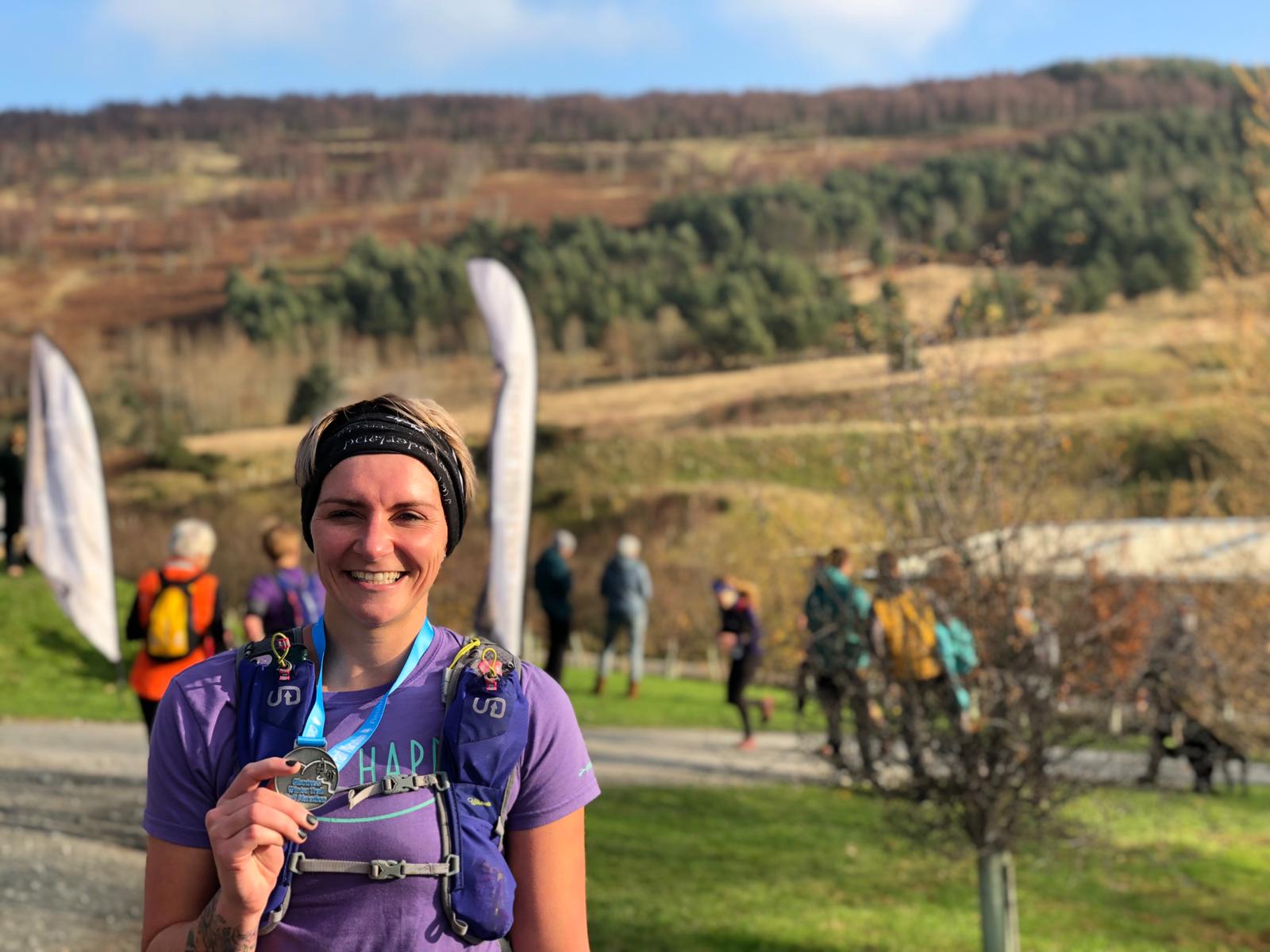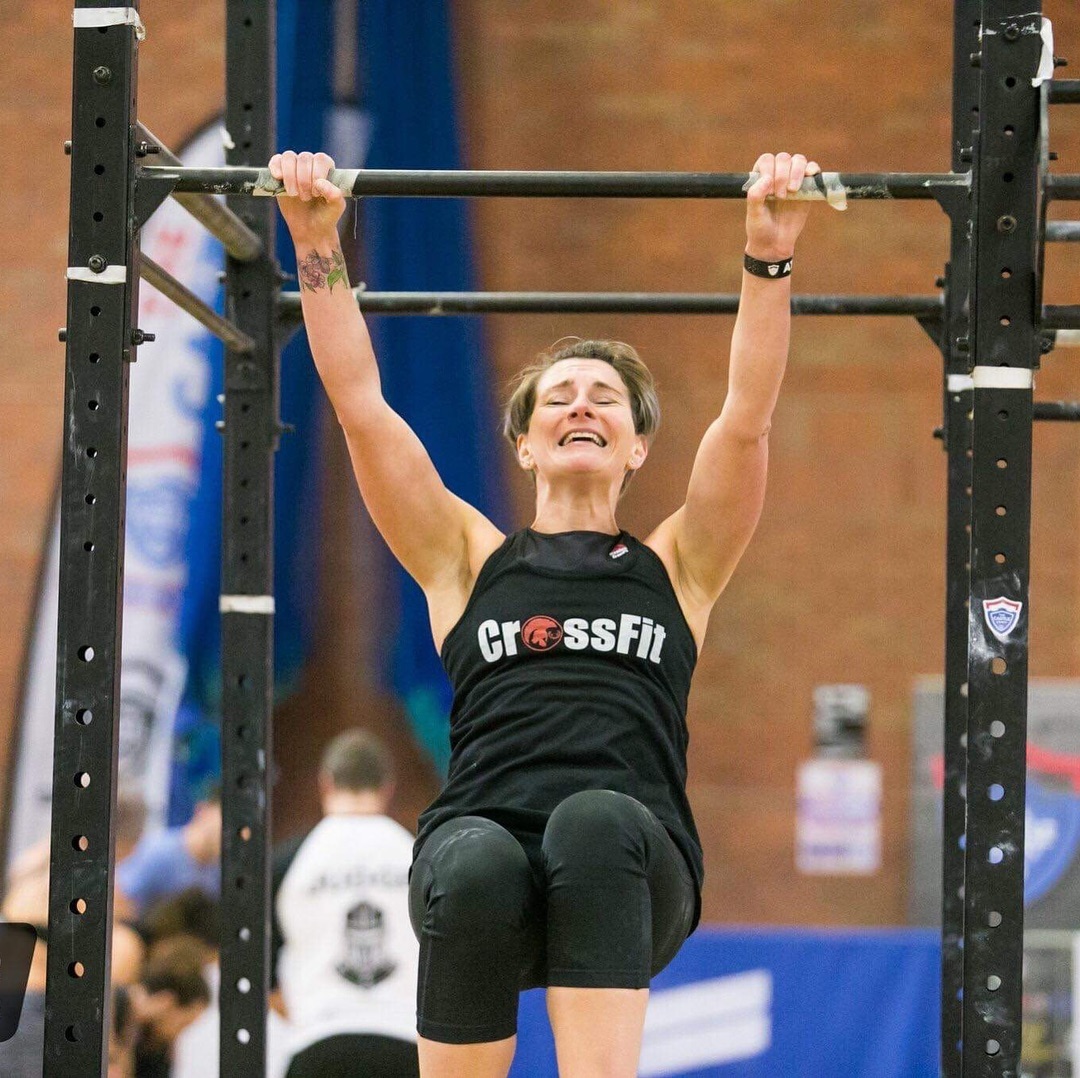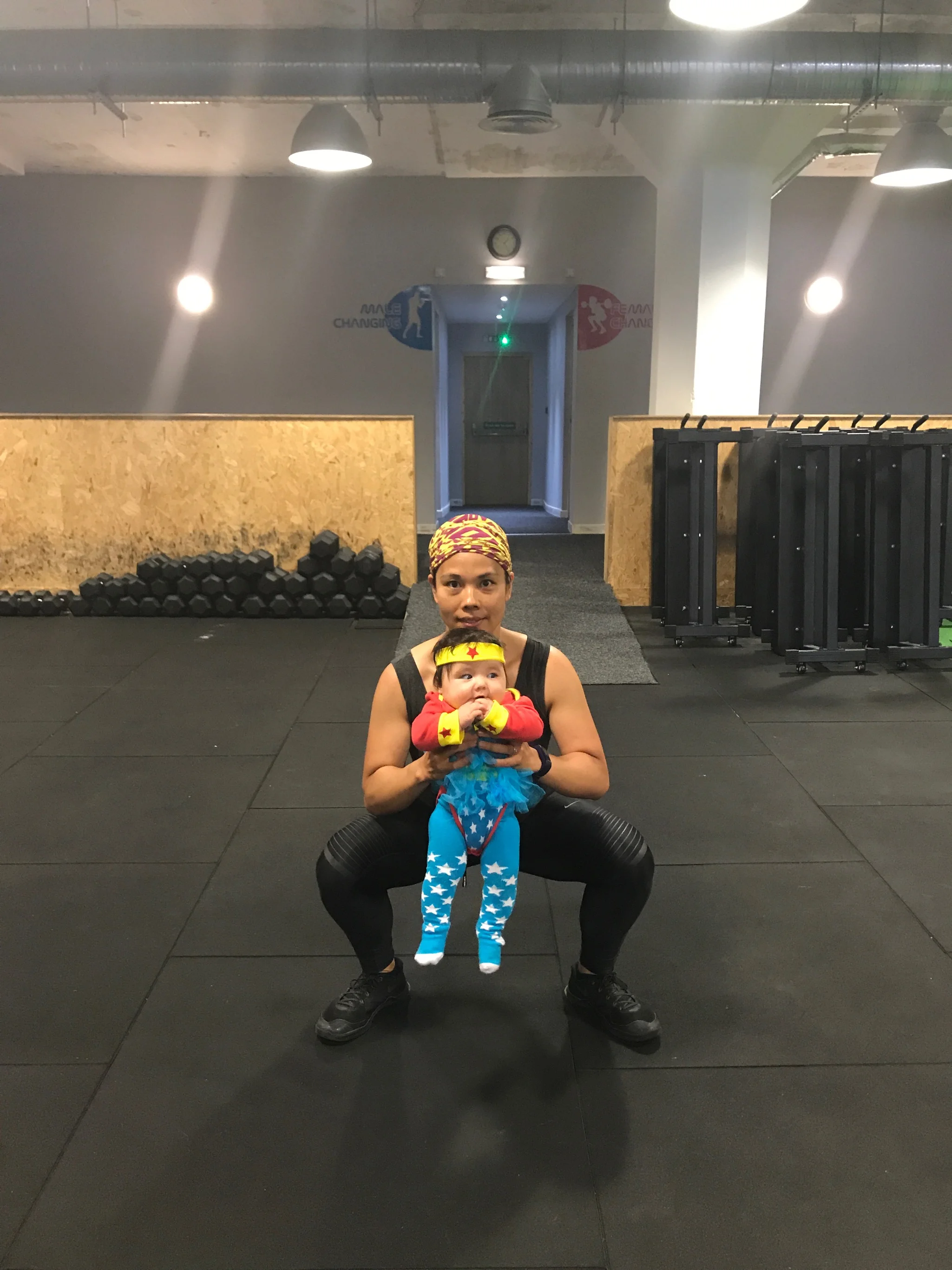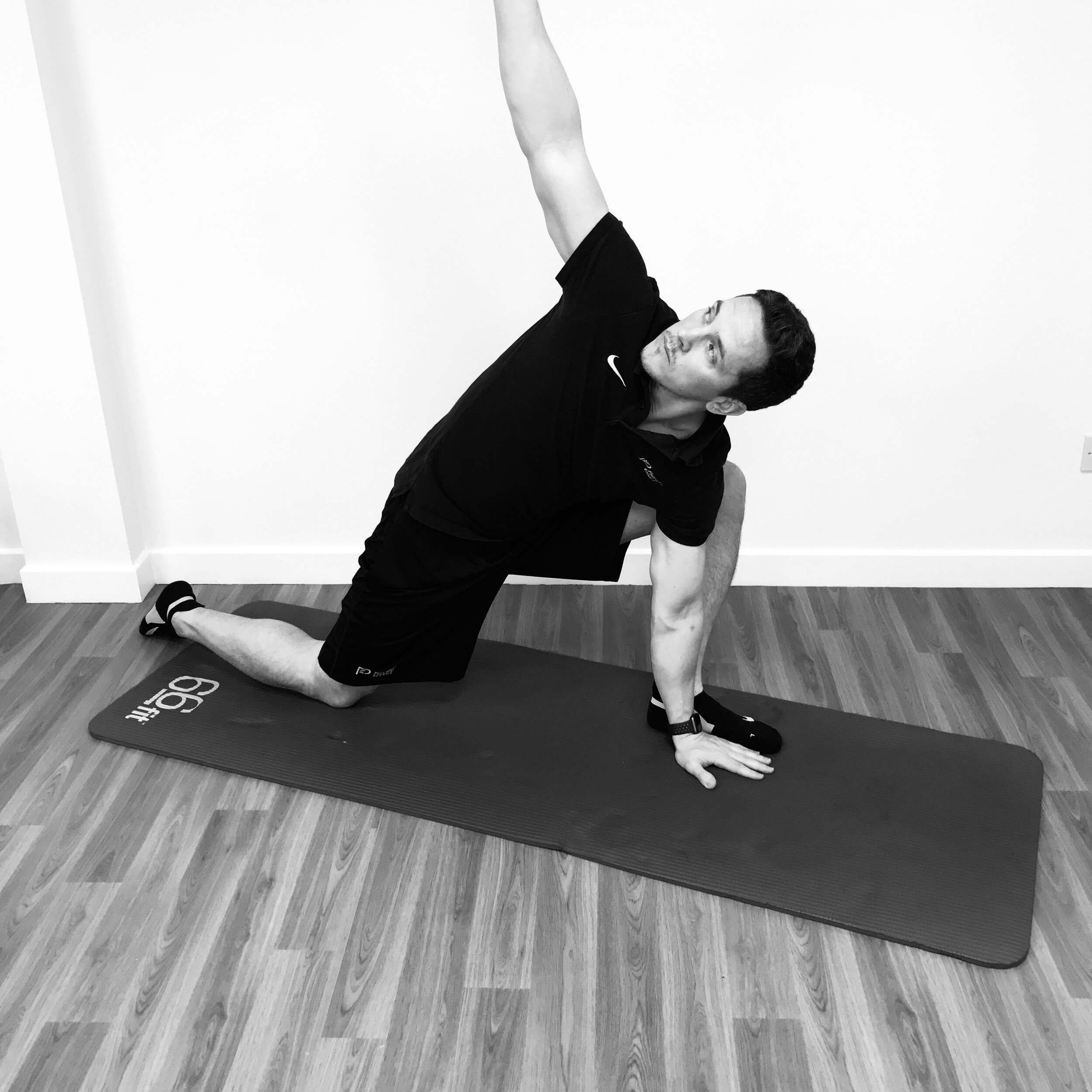Injury prevention is obviously preferable to injury cure. It is common for people to adapt their work desks and equipment to improve their posture as a form of injury prevention. It is also common for gym-goers and athletes to practice good form when using weights as a means of injury prevention. What is uncommon is paying attention to and correcting our most frequently used movements that arguably have some of the more devastating effects on joints if performed badly over a lifetime.
How Physio Effect helped me on my Journey to the London Marathon - a Customer's Testimonial
I started a 16-week marathon training program in January, only to get a recurring calf injury in the second week, but thanks to treatment and advice from Jonny, I was able to get back to training in a couple of weeks and back to running properly is a couple more, but it was a less than ideal start.
2019 Highland Fling 53 mile Ultra-Marathon Race Report
The night before a race is always a stressful period for me. I’m usually a nervous ball of energy, overthinking everything from what to wear and what I’m going to eat (an absolute delight for my coach and husband Jonny!). So the night before, I had my outfit set out, my dropbags ready and had written down everything I was going to eat and drink during the race – possibly a little overkill, but that’s just my personality! Jonny had given me approximate split times for Drymen, Balmaha and Rowardennan. Beyond Rowardennan was all up to me. Time to get some sleep.
4am alarm for a 6am race start. I woke up at 3:55am. I was grateful for my mother staying as she was in charge of our 2 year old. We drove to Milngavie as Jonny gave me a final pep-talk. Two nervous pees later and an obligatory photo next to the Australian flag as I couldn’t see a New Zealand flag anywhere (sorry fellow Kiwis!), I was stood at the start line in the 10-12 hour pen. The clouds were grey but the temperature was mild. The forecast was to be “some rain” which suited me having lived in Scotland for a number of years now.
The plan was to get to Drymen (12.6 miles) in 1:55hr which meant an average of 9min/mi. I knew the push through Mugdock would be slow with the crowd (nearly 800 starters) so I just relaxed and enjoyed the atmosphere and the chat. Having done the entire route at least 3-4 times in parts during my training, I knew the trail like the back of my hand and I knew the rolling down-hill stretches towards the Beech Tree Inn was where I could pick up my pace. After 30 minutes, I tucked into my first bit of food (half a salted caramel Chia bar). My nutrition for this race was an exact science. I was to take 300 cals per hour no matter what and I had to stick to it.
I arrived at Drymen and after a quick kit check from the marshals, I looked at my watch: 1:53hr. Brilliant. I felt great, legs and lungs were good and in my excitement I passed the checkpoint drinking 2 cups of water but forgot to re-fill my flasks (oops). The next checkpoint was Balmaha at 19.8 miles which included a climb up Conic Hill. The aim was to be there in 3:20hrs. In my head, I could hear Jonny’s voice: Get to the steps at the bottom of the hill, take a gel and power hike the whole way. The whole way. Don’t run it and let your HR peak, save your lungs and your legs for the lochside.
Conic Hill ascent
By this stage the rain had set. The ground was getting slippier but I was thankful that there wasn’t much wind. As I approached the top of the hill, the views opened up of Loch Lomond shrouded in some mist, which only added to the beautifully dramatic atmosphere. No matter how many times I’ve run this section, the views of this place never fail to amaze me. I also recognised a familiar face. There was Jonny waiting (in the cold and rain!). I ran towards him and gave him the biggest kiss and cuddle, “Take it really easy” he said to me. He and I knew I was slightly ahead of schedule so there was no need to beast it down hill. I cruised it and just enjoyed the views but also careful of my footing due to the wet rock. I arrived at the Balmaha checkpoint at 3:14hrs. The marshals there were incredible and were full of smiles and cheer. I chose not to have a dropbag at this section and instead had my flasks re-filled with water and quickly went on my way. One marshal asked if I wanted some Buckfast mixed into one – I must admit, I was slightly tempted but decided against it for fear of my tummy possibly protesting later on. I also saw some porta-loos and for a split second I thought about using the facilities but decided against this, thinking there may be some in Rowardennan (I would regret this later).
Conic Hill Descent
The views down to Loch Lomond
Rowardennan checkpoint would be at 27.2 miles. I was to hopefully get there in 4:50hrs. I quite enjoy this section. Sheltered for most part and I love the views of the Loch to my left, all mostly runnable. I relaxed into a pace and let my mind wander a little and I thought about what I wanted to eat when I got to Rowardennan. Before I knew it, I was there and I looked at my watch: 4:48hrs. Bang on. The marshals there were swift. My dropbag was already waiting and a lovely lady helped me re-fill my flasks one with Tailwind and one with water, “Let me fill them and you just concentrate on getting some food into you, you’re doing great.” I wanted to hug her. I stuffed my face with white chocolate Tim Tams (thanks mum for bringing them from Australia!), ate some dried mango, dates and apricots and drank a bottle of flat coke.
From here on in, it was all up to me. I was to go by feel. Push if I could, ease back if I didn’t feel right. Eat, drink - control the controllables. Jonny’s voice in my head saying this over and over. The next checkpoint was Inversnaid at 34.4 miles. I don’t remember much of this section. I was too busy thinking about how much I needed to pee and how there were no porta-loos in Rowardennan after all (oops!). I chatted to a few folk. I met a guy from England who had returned to do the Fling this year after a DNF last year. He commented on how he loved that I colour co-ordinated my outfit but I just needed to maybe sort out the shoes as they were purple and not blue like the rest of it – thank you whoever you are for making me smile!
I arrived at Inversnaid. I was wet and cold and a lovely man helped me with my dropbag and refilled my water (I cannot tell you how amazing every marshal was during this race. They were all angels.) Another lady kept telling me I was doing great and I could have a little rest from running for the next section as this was to be the technical stretch. I knew this stretch very well. In my last long training run, I did an out-and-back along this route so I knew how slow it was going to be scrambling and climbing over rocks and roots on a narrow path. The wet weather would make them slippery so I HAD to take good care here. I’d like to say that I came into my own on this section. Having been an avid hill-walker before I took up trail-running, I was used to scrambling and I was able to gain some good ground passing a few people along the lochside as I scrambled up and over boulders. It was actually mentally as well as physically tiring. It took a lot of concentration and when the end came I couldn’t help but shout, “THANK YOU GOD!”
The next checkpoint would be Beinglas at 40.9 miles. I still felt good albeit wet and cold and just as I approached the checkpoint – lo and behold – a porta-loo! The rain was relentless and I really felt for all the marshals waiting for us to arrive standing in this cold. I would be forever grateful to them and the way they lifted my spirits up each time I arrived at a checkpoint. After stuffing food in my face and drinking another bottle of flat coke, off I went. Only a half marathon to go and I still felt good. That elation did not last long, unfortunately. You could say, from Beinglas, everything went a little downhill for me apart from the actual course…which was 7 miles of UPHILL. Gah!!! When you’ve just run 40 miles and your legs are so fatigued - this was hell. It was from here I could feel my right hip flexor seize up with every steep incline. I took a couple of salt tabs but it didn’t really help. I decided to put my physiotherapist hat on and see what I could do to ease the pain. I tested out “The Pain Gate Theory” whereby you would introduce a different pain stimulus to block the nerve signals to your brain from the other pain stimulus that is bothering you. In my case, every time I needed to lift my leg on a climb, I would bite my finger really really hard so that the pain of my biting my finger would distract me from the pain in my hip. Sounds a bit nuts right? Anyway, it seemed to work for a while and I pushed on.
The Bogle Glen checkpoint was near which meant only 6 miles…i.e 10km left till the finish!! The rain was unrelenting. I was so cold I could barely feel my hands now. This was the start of the roller-coaster of the Crianlarich Forest. I got a lovely surprise at the top of the first hill, two ladies sheltered in the trees playing accordions and a bowl of jelly babies waiting. Absolute angels. My spirits were lifted and with a smile I pushed on as I listened to the sound of their music. Up and down and up and down of rolling hills followed, that seemed to take forever. 10km might as well have been another 100km! I did surprise myself and I managed to pass a few people and before I knew it, I was out of the forest and hitting the road-crossing and the final 3 miles to the finish line.
I passed a smiling spectator standing under an umbrella, “you’re doing great, only 500m to go.” That’s when I heard the bagpipes. The tears started here and finally the red-carpet finish was within reach. As I ran along that beautiful red carpet, I saw Jonny holding our daughter Aria. She was squealing with delight, “Mummy!” The tears kept flowing. As I passed them, I heard Jonny yell, “she wants to run with you to the finish!” I knew if I halted to “run”at my 2 year old’s pace, my legs would seize so instead I grabbed her in my arms and carried her across. I’ll never forget that moment as I crossed the line with her and I was met with cheers, hugs and kisses from the finish-line marshals, one of them being our friend Gavin Bussey.
Carrying our daughter Aria along the red carpet to the Finish Line.
Finish time 11:15:39
Thank you to all the organisers and volunteers of this epic race! Incredible organisation, support and friendly faces throughout and the scenery of the course is out of this world. I would highly recommend it to anyone to give it a go. It is one that will be forever etched in my mind.
Jonny, Mariam & Aria Kilpatrick
Trail With Us - first session report
On Saturday March 2nd, we had our first trial trail run at Chatelerhault Country Park - it was a great session and we definitely got the best of Saturday’s weather!
A small number of beta-testers agreed to come on our trial Trail With Us run on Saturday morning…
To find out more about the informal group - please click here.
If you’re interested in joining us in future please fill in the form below - we will change the venue around and make it so it’s accessible for walkers/ runners and everyone in between - we’re even talking about having a buggy-friendly route!
View some of the footage from the event here and even more on our YouTube Channel
Real Life Stories: Recovering from a disc injury
Fiona Callan is a CrossFitter and Ultra-marathoner who injured her back in 2017. She had an MRI which confirmed an L5/S1 disc bulge with nerve root irritation. In this interview we discussed how she avoided surgery and returned to the things she loved doing best.
Hi Fiona, thank you for taking the time to share your experience with us. We know you've come a long way from a pretty bad back injury. Before we begin, tell us a bit about yourself! What type of work do you do and what's your sport/exercise/fitness background?
I work in the NHS, primarily an office based job. Preceding my injury I was also studying for an MSc so basically spent all day and night sitting at a desk.
I started running in 2008, mainly 5k and 10k distance on roads but I wasn’t very good and didn’t enjoy it so moved to trail and hill running instead when I started gradually to increase my distance. I met some really cool people to run with as well. In 2012, I was talked into a trip to Nepal by a friend but it wasn’t until around 4 weeks to go that I found out he had signed me up to an ultra marathon. I didn’t even know what that was! It was sheer determination that got me through that and I really caught the ultra marathon bug.
In 2014 I started CrossFit as I thought some strength and conditioning type training would help with my running and I had no idea what I was doing in a conventional gym. The coaching and set workout approach has really worked for me and made me use muscles I didn’t know I had.
So the big question, when and how did you injure your back? Was it after one incident or was it something that gradually built up and got worse? What were your symptoms (i.e. back pain? leg pain? numbness etc...)
To be honest I’ve always had a bit of a lower back niggle, probably postural, but thought it would just go away. It was definitely something I started to feel more when I started CrossFit as I really had to use my back and core more than I had been doing running. Slowly I noticed it had started to affect my running, I had pain in my right buttock that shot down my leg now and again and my leg generally felt heavy. If I left it a few days it would go away but it meant I couldn’t really run or CrossFit as much as I wanted to.
It started affecting my job as I couldn’t sit comfortably for any period of time. I was travelling by train to Edinburgh at least twice a week which became difficult. On one journey I had to get off the train and go back to Glasgow as I couldn’t face sitting for an hour.
Then during a workout involving a barbell I cried so much I had to admit that something wasn’t right.
My initial symptoms were primarily in my lower back, there was a build up of pressure around my stomach and back even when I bent over the sink to wash my face. I tried to keep active but really scaled back on what I was doing. I kept up my hill walking as this is an activity I love doing with my nephew – I used poles and made Ewan carry my bag as he’s the young one! I tried running but could only manage 1k before I felt my back stiffen.
One Saturday I went walking with Dad and Ewan in the Lake District. It was an amazing day. The hill wasn’t too hard; we took our time and enjoyed it. It was the shooting pain in my right leg that woke me up early on the Sunday morning. I tried to stand up but my leg just wouldn’t work. I limped to the bathroom hanging onto the wall and at that point I knew there was something seriously wrong. It sounds dramatic but I genuinely felt paralysed down that whole side of my lower body, first thoughts were ‘I’ll never run again!’ and panicked. My boyfriend called NHS24 and a nurse managed to calm me down and suggested I took paracetamol with ibuprofen and try find a comfortable position until a doctor could get to me. A few hours and one injection later the pain had dulled. He said it was my sciatic nerve; I should try to relax and spend less time sitting down!
What was the initial management i.e. what treatment did you seek?
I got an appointment with Jonny who did some needling on my lower back/ glutes and gave me some exercises to do. I am the most impatient person and after a week of exercises I didn’t feel any different so I saw another physio (sorry!) who basically told me the same thing and gave me the same exercises. I really was in denial about how serious it was. I spoke to coaches in the gym, chatted to other runners and did a lot of Googling but all the answers were the same.
It was the mental part I actually found the toughest to deal with. I have made so many friends through running and CrossFit and my social media is full of it too so I was always seeing and hearing about all these amazing runs and PBs. I just felt stuck and disconnected. I saw my GP as I really felt like I was struggling to cope. People were always asking how I am and telling me I should ‘do this and do that’ and eventually I just got fed up talking about it. My GP didn’t really help me; she referred me to her physio friend but I didn’t go.
At the same time, Jonny had passed me onto Mariam for Clinical Pilates and it was during my consultation that she suggested some short term medication for my nerve problem in my right leg. I went to another GP for this and as well as giving me the medication, he was really keen to get me back running and to the gym so he referred me for an MRI.
Am I right in saying you ended up seeing a consultant neurosurgeon? What did the MRI show?
Yeah I was really lucky in that I got an MRI pretty quickly. I think the 2nd GP had something to do with that. A few weeks after the scan. I received a letter with a hospital appointment but with no other information. Frustrating and worrying. I thought well there must be something not quite right and because of my problem with patience, I called the GP and asked him to give me a brief overview of the scan. He said he could see a disc bulge and I should continue doing my physio exercises until my appointment. I had just started with the Clinical Pilates class so I let Mariam know the issue and she tailored exercises for me until I found out more about the problem.
So there was the prospect of having surgery? How did that make you feel? Was this something on the cards or wanting to avoid?
I remember getting a phone call from a surgeon in the spinal unit and it made me feel sick. I actually don’t remember what he said to me as the idea of back surgery just terrified me. I wasn’t exactly in crippling pain so the idea of surgery just felt a bit extreme to me. This was something I definitely wanted to avoid. I just really trusted my physios and they really believed I could get better without it. I didn’t feel that my pain was bad enough for surgery – for me this was the last resort, I’ve never heard positive stories about it.
At the appointment, the doctor went through my scan which I found fascinating. I actually felt a bit of weight come off my shoulders when I could physically see the issue. It had been hard to accept when I didn’t know for sure what the problem was but there it was clear in front of me. She then told me that they would do surgical intervention if I was getting sharp pains down the top of my leg. I told her I had that a few weeks before but it had been getting much better. We left it at that and I was told to get in touch if anything changed.
I had so many conversations with my boyfriend, my parents (and myself) and decided that it wasn’t the end of the world if I couldn’t run 50 miles or couldn’t deadlift 100kg as long as I could stay active. I would just scale back what I was doing.
You've spent the best part of a year doing some serious rehab with Clinical Pilates. In your own words can you explain what that is and how it helped you?
I had done a bit of Pilates before as I’d read and heard it was good for runners. It was one of those things I struggled to stick to because I never left the class feeling like I’d worked hard and my issue with patience didn’t help. When I told my boyfriend about it he signed me up for 6 weeks because he knew I’d have to go if he paid for it! I noticed a huge difference after these 6 weeks.
It is basically pilates but physio led so your exercises are all tailored to whatever issue you may have so we’re all doing something different generally. It’s a small class but everyone is in the same boat and really friendly. Mariam checks in with you regularly during the class and pushes you when you’re ready but also changing exercises if something isn’t quite feeling good.
I expected my exercises to all be lower back focused as that’s where my injury was but actually they’ve been full body movements. As well as having a stronger back, I have a stronger core and much improved posture. Mariam also spent some time working on my legs, particularly my right leg as the nerve had been affected and I had limited movement and very little strength.
Eventually you returned to CrossFit and trail-running. How long did that take from when you first injured yourself?
I was always doing a scaled back version of CrossFit and a bit of trail running while I was injured but I was mindful of undoing my hard work. It was important to me mentally that I kept in touch with coaches/ friends in the gym and my runner friends.
I accepted my injury in May 2017 and started Clinical Pilates in the October. In May 2018 I was a more confident runner so decided to train for a race following a plan, building up in distance and I finished the Mad Hatters Half Marathon and the Glentress Half Marathon with a PB and no back or leg pain. Not quite back at ultra marathon distance but I’m actually enjoying the shorter runs at the moment. In June 2018 I started back at CrossFit and noticed that I’m better at a lot of the movements as I actually use my back and core as I should. I’m always conscious of loading too much weight on bars and I know certain movements still aggravate my back but I know when to stop and I just need to gradually build my strength back up. I was asked if I’d like to be part of a team from the gym for a CrossFit competition, I said yes why not I can try and we finished in 3rd place with no back injury!
Most people in this day and age are seeking the "quick-fix" or miracle cure. In fact, most people in your shoes would opt for surgery given the opportunity. What advice would you give them?
Your back is such a major part of your body so decisions on surgery should never be made lightly. Unless a professional is telling you there is no other option I would encourage people to commit to the exercises, spend less time sitting down and stay active by doing anything you find fun (that’s obviously not going to hurt you)
Working through this injury has taught me so much about my body and my lifestyle as well as making me a better runner and CrossFitter. This is all coming from the most impatient person!
5 Tips To Keep Your Health & Fitness Goals On Track
Clinical Yoga - from a client perspective
When Raz Leonard, one of our Physio Team, suggested developing Clinical Yoga to create a platform for her to be able to help Physio Effect clients have another options through which to achieve their goals, we thought it was a great, and really interesting idea! Read more to find out how our Clinic Manager, Sarah, got on!
Case Study: Frontal Knee Pain (Part 3)
Single leg exercises should be incorporated in strength and conditioning sessions as it is the best way to mimic the single leg work required in running with landing and push-off. It is also a good way to identify any imbalances from one side to the other. In the final part of this series, Jonny’s pain had largely settled and his rehab focused on single leg control. He also practiced a more efficient running technique to minimise loads placed on the knee.
Case Study: Frontal Knee Pain (Part 2)
During the initial stages of rehab, the primary focus was to maintain muscle function which can be inhibited by pain. During assessment, it was also established that Jonny was weaker on one side of his outer hip muscles (glutes) when looking at the way he balanced on one leg. The video below looks at a couple of simple exercises he worked on to improve this.
Case Study: Frontal Knee Pain (Part 1)
Knee pain is a common issue in runners. It can start off as a niggle and can easily be ignored until the point where running is no longer tolerable. This is frustrating particularly when training for a race or event. In part 1 of this month’s case study, we will look at some common physiotherapy techniques we use for pain relief in the treatment of anterior (pain in the front of) knee pain.
Jonny hurt his knee during a 42-mile Ultra Marathon which was on trail and had plenty of up and down hill sections. This caused an acute overload of the structures around his knee cap, causing pain and swelling.
Case Study: Ankle Sprain Rehab - Part 3
This concludes our 3-part series following Mariam’s ankle rehab programme after a bad sprain two weeks before her first trail marathon and then her first trail ultra-marathon five weeks after that.
Phase 1 (first 2-3 days after injury):
Ice, Elevation, Compression
Crutches
Avoidance of non-steroidal anti-inflammatories (i.e. ibuprofen)
Phase 2:
Non-weight-bearing exercises
Training modification
Progression to weight-bearing and single leg exercises
Phase 3:
Training modification
Running technique modification
Progression to plyometrics and impact loading
Case Study: Ankle Sprain Rehab - Part 2
Case Study: Ankle Sprain Rehab: Part 1
We all know injuries happen and, in most unfortunate instances, they can happen before a sporting event you have been training for months. It can be disheartening when you’ve spent countless hours training for such an event with the prospect of having to pull out. In this month’s case study, we will be looking at managing an ankle injury coming from a personal experience from one of our own physios, Mariam. We will be demonstrating a sports physiotherapist’s approach to dealing with an injury leading up to an event over a 3-part series. Part 1 is below:
Feeling inspired by "Silvers" at CFG!
Raz Leonard, one of our Physio Team, recently visited the older adult class at Crossfit Glasgow (CFG) and taught some specific Yoga and Pilates moves to help activate and mobilise key areas during their warm up and cool down.
